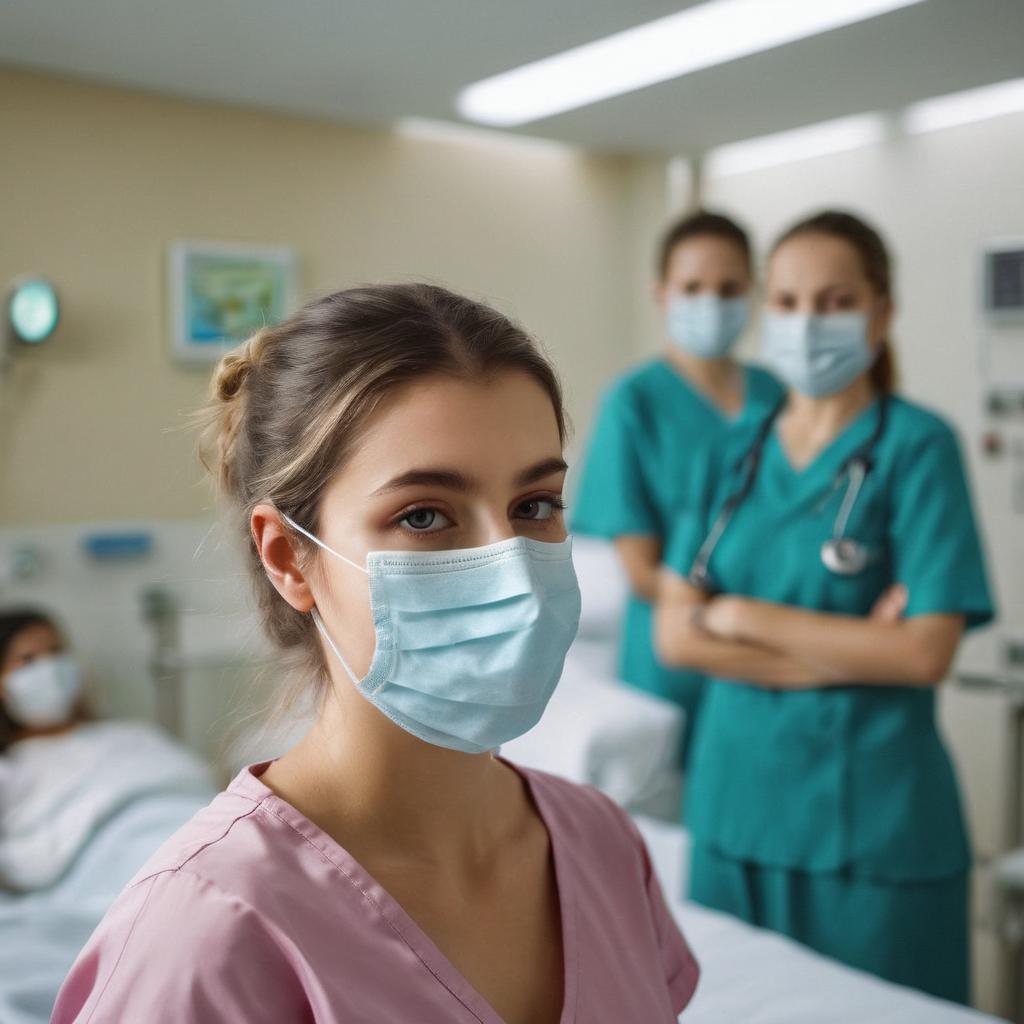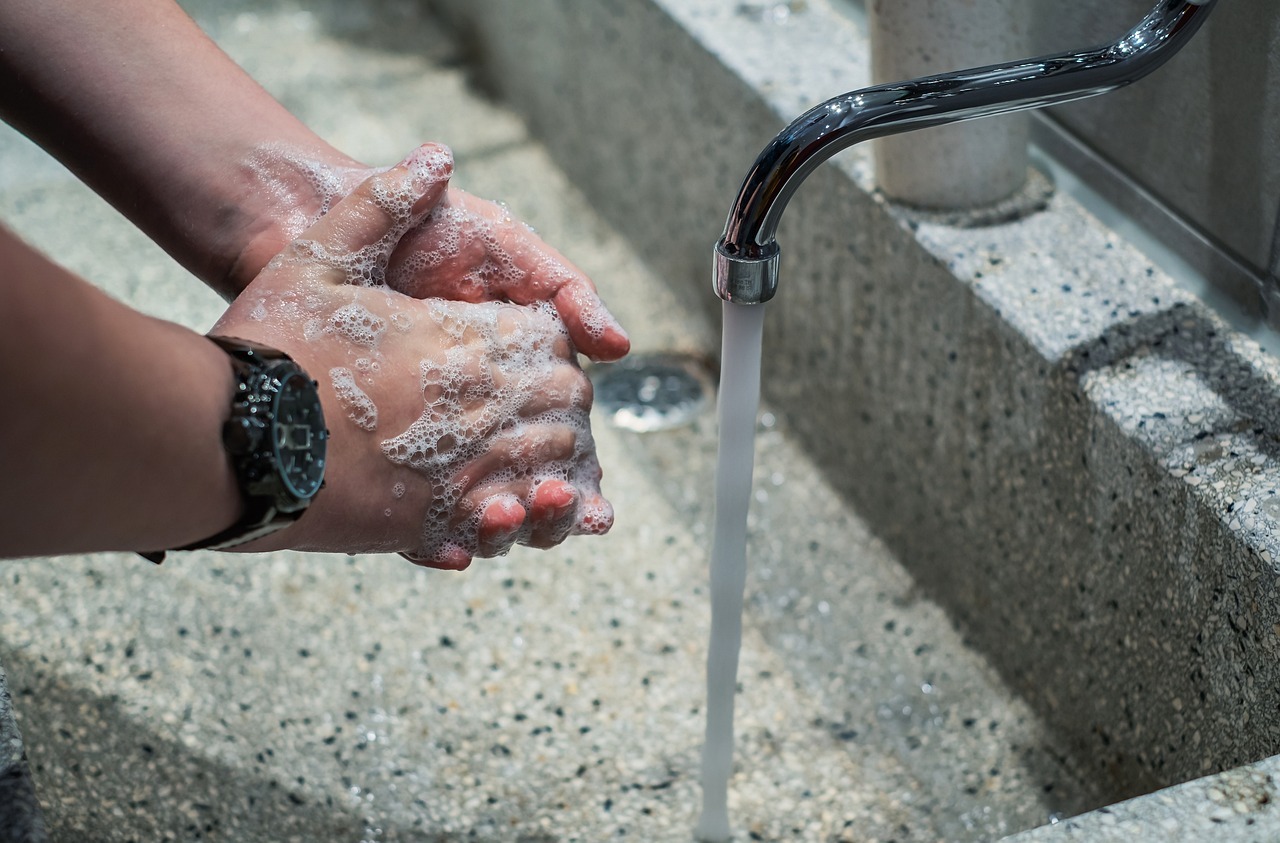-
-
In Hospitals, Viruses Are Everywhere. Masks Are Not:
-
-
Outlines
- I. Introduction
A. Overview of healthcare environment
B. Hospitals as breeding grounds for infectionsII. Understanding the Hospital Environment
A. The Hub of Activity
1. Constant movement of healthcare professionals, patients, and visitors
2. Increased risk of virus spread due to high trafficB. The Role of Ventilation
1. Hospitals rely on ventilation systems
2. Ventilation systems may circulate airborne pathogensIII. The Limitations of Masks
A. The Mask Conundrum
1. Symbol of protection during COVID-19 pandemic
2. Limitations of masks, especially in hospitalsB. Viral Particles and Mask Effectiveness
1. Tiny viral particles
2. Variability in mask effectivenessIV. The Importance of Hygiene Practices
A. Hand Hygiene
1. Preventing the spread of viruses through handwashing
2. Strict handwashing protocols for healthcare workersB. Surface Disinfection
1. Viruses surviving on surfaces
2. Need for regular disinfection of high-touch surfacesV. The Role of Vaccination
A. Healthcare Worker Vaccination
1. Reducing the risk of transmission within hospitals
2. Encouraging vaccination among healthcare workersB. Patient Vaccination
1. Vulnerability of patients with compromised immune systems
2. Ensuring eligible patients are vaccinated - VI. Why Masks are necessary in hospitals:
- VII. Safety Precautions For Hospitals:
-
VIII. Conclusion
A. Recap of viruses’ prevalence in hospitals
B. The role of masks, their limitations, and other measures
C. The significance of hygiene practices, vaccination, and their combined role
IX. FAQs
Introduction:
In the complex and bustling world of hospitals, a constant battle against invisible adversaries unfolds daily. Viruses, those microscopic agents of illness and contagion, lurk in every corner, posing a relentless threat to both patients and healthcare workers. In this challenging environment, where the pursuit of health and healing is paramount, it may come as a surprise that one of the most basic and effective tools for viral containment—the mask—is not always a ubiquitous presence. In hospitals, where lives are on the line, the ubiquity of viruses starkly contrasts with the inconsistent use of masks. This discrepancy raises critical questions about infection control, healthcare protocols, and the challenges faced by those on the front lines of medicine. In this exploration, we will delve into the complex dynamics of mask-wearing within hospitals, shedding light on the critical role they play in the ongoing battle against infectious agents.

Understanding the Hospital Environment:
The Hub of Activity
Hospitals are bustling hubs of activity, with healthcare professionals, patients, and visitors constantly moving about. This high traffic environment increases the risk of viruses spreading.
The Role of Ventilation
Hospitals rely heavily on ventilation systems to maintain air quality. However, these systems can also circulate airborne pathogens, making it challenging to control the spread of viruses.
The Limitations of Masks:
The Mask Conundrum
While masks have become a symbol of protection during the COVID-19 pandemic, they have their limitations, especially in a hospital setting.
Viral Particles and Mask Effectiveness
Viral particles can be incredibly tiny, and not all masks are effective at filtering them out. This raises questions about the actual protection provided by masks in hospitals.
The Importance of Hygiene Practices:
Hand Hygiene
One of the most effective ways to prevent the spread of viruses in hospitals is through proper hand hygiene. Healthcare workers must adhere to strict handwashing protocols.
Surface Disinfection
Viruses can survive on surfaces for extended periods. Regular disinfection of high-touch surfaces is crucial to prevent their transmission.
The Role of Vaccination:
The Role of Vaccination Healthcare Worker Vaccination (H4) Vaccinating healthcare workers against common viruses can reduce the risk of transmission within hospitals. Encouraging vaccination is a key strategy. Patient Vaccination (H4) Patients with compromised immune systems are particularly vulnerable. Ensuring that eligible patients are vaccinated can help protect them from hospital-acquired infections.
Patient Vaccination
Patients with compromised immune systems are particularly vulnerable. Ensuring that eligible patients are vaccinated can help protect them from hospital-acquired infections.
Why Masks are necessary in hospitals:
Masks are necessary in hospitals for several important reasons:
-
- Infection Control: Masks serve as a vital barrier to prevent the transmission of infectious agents, including viruses and bacteria. In a hospital setting, where patients with various medical conditions are present, the risk of disease transmission is heightened. Masks act as a protective shield for both healthcare workers and patients.
- Protecting Vulnerable Patients: Many hospital patients have weakened immune systems due to their medical conditions or treatments. These individuals are more susceptible to infections. Wearing masks helps healthcare workers reduce the risk of transmitting pathogens to these vulnerable patients.
- Preventing Healthcare-Associated Infections: Hospitals aim to provide a safe and sterile environment for patients. Masks are a key element of infection control protocols, helping to prevent healthcare-associated infections (HAIs) that can lead to complications and prolonged hospital stays.
- Respiratory Protection: Hospitals treat patients with a wide range of respiratory conditions, some of which may be contagious. Masks, particularly N95 respirators, are designed to filter out small airborne particles, providing respiratory protection for healthcare workers who come into contact with respiratory pathogens.
- Minimizing Cross-Contamination: Masks help contain respiratory droplets that may carry pathogens. Without masks, healthcare workers could inadvertently spread infectious agents from one patient to another or from a patient to themselves.
- Patient Confidentiality: Masks can help protect patient confidentiality by concealing facial expressions and identities, which is especially important in psychiatric units or when treating high-profile individuals.
- Compliance with Infection Control Guidelines: Hospitals are required to adhere to strict infection control guidelines and regulations to maintain a safe healthcare environment. The use of masks is often mandated by these guidelines to ensure compliance.
- Public Health Measures: During outbreaks of contagious diseases such as COVID-19, the use of masks in hospitals becomes even more critical. It not only protects healthcare workers but also helps prevent the hospital from becoming a source of further transmission to the community.
- Symbol of Safety: In addition to their practical benefits, masks also serve as a visible symbol of safety and hygiene within a hospital. Patients and visitors may feel more secure knowing that healthcare professionals are taking precautions to reduce the risk of infection.
In summary, masks play a crucial role in maintaining the safety and well-being of patients, healthcare workers, and the overall healthcare environment in hospitals. They are a fundamental tool in preventing the spread of infections and ensuring that hospitals remain places of healing and recovery.
Safety Precautions For Hospitals:
Here are some safety precautions for hospitals:
-
- Hand Hygiene: Proper handwashing is one of the most fundamental safety precautions in hospitals. Healthcare workers and visitors should wash their hands thoroughly with soap and water for at least 20 seconds, especially before and after patient contact.

- Personal Protective Equipment (PPE): Healthcare staff should use appropriate PPE, including gloves, masks, gowns, and eye protection, when dealing with patients who have infectious diseases. Proper disposal of used PPE is crucial.
- Infection Control Protocols: Hospitals should have strict infection control protocols in place. This includes isolation rooms for patients with contagious illnesses, sterilization of equipment, and regular cleaning and disinfection of surfaces.
- Vaccination: Healthcare workers should be up-to-date with their vaccinations, including influenza and other preventable diseases. This not only protects them but also prevents the spread of diseases within the hospital.
- Patient Identification: Proper patient identification is essential to prevent medication errors and ensure the right treatment is given to the right patient. Using wristbands or electronic systems can help in this regard.
- Medication Safety: Hospitals should have protocols for safe medication administration, including double-checking drug names and dosages. Medications should be stored securely and administered by trained staff.
- Fall Prevention: Hospitals should take measures to prevent patient falls. This includes using bed alarms, ensuring walkways are clear, and providing assistance to patients at risk of falling.
- Emergency Preparedness: Hospitals should have emergency plans in place for various situations, such as fires, natural disasters, or infectious disease outbreaks. Staff should be trained on these plans.
- Visitor Guidelines: Hospitals should have visitor guidelines that include restrictions during outbreaks, hand hygiene, and other safety measures. Visitors should be educated on these guidelines.
- Patient and Family Education: Patients and their families should be educated about infection prevention, hand hygiene, and other safety precautions they can take during their stay and after discharge.
- Patient Privacy: Ensuring patient privacy and confidentiality is critical. Hospitals must comply with HIPAA regulations to protect patient information.
- Safety Reporting: Encourage a culture of reporting safety concerns or near-miss incidents. Staff should feel comfortable reporting issues without fear of retribution.
- Safe Handling of Hazardous Materials: Hospitals often deal with hazardous materials, including chemicals and biohazardous waste. Proper handling, storage, and disposal are essential.
- Training and Education: Regular training and ongoing education for healthcare staff are vital to keep them updated on safety protocols and best practices.
- Security Measures: Hospitals should have security measures in place to protect against violence and unauthorized access. Security personnel should be available to handle such situations.
These safety precautions are essential for maintaining a safe and secure environment in hospitals, not only for patients but also for healthcare workers and visitors. They help prevent the spread of infections, reduce accidents, and ensure the well-being of everyone in the healthcare setting.
Conclusion:
In hospitals, viruses are indeed everywhere due to the high traffic and complex environment. While masks play a role in reducing the spread of infections, they are not a foolproof solution. Proper hygiene practices, including handwashing and surface disinfection, along with vaccination, are equally crucial in the battle against hospital-acquired infections.
FAQs:
-
- Are masks completely ineffective in hospitals?Masks offer some protection, but they are not the sole solution. Other measures like hygiene practices and vaccination are equally important.
- How often should healthcare workers wash their hands?Healthcare workers should wash their hands regularly, especially between patient interactions.
- Can patients refuse vaccination in hospitals?Patients have the right to refuse vaccination, but healthcare providers should educate them about the benefits and risks.
- Are all masks equally effective against viruses?No, not all masks are equally effective. N95 respirators provide better filtration compared to cloth masks.
- What can visitors do to minimize the risk of infections in hospitals?Visitors should follow hygiene guidelines, wear masks, and limit contact with patients to reduce the risk of infection transmission.


